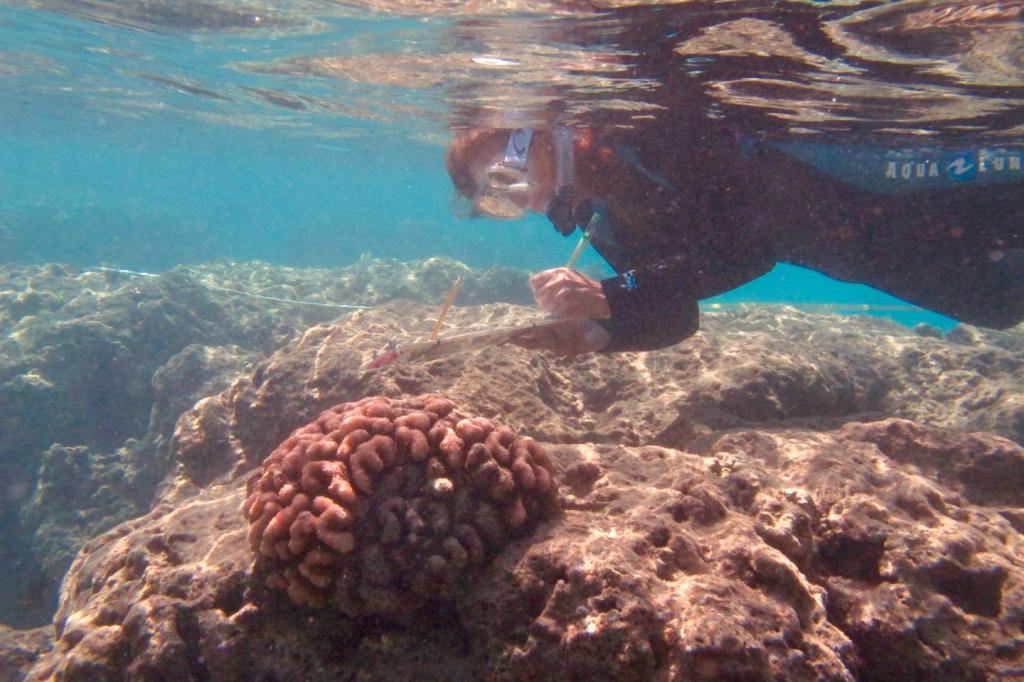
Dr. Ku’ulei Rodgers conducting coral bleaching survey.
(Image by Keisha Bahr)
Researchers have documented a third global coral bleaching event, which ended just in 2016, at the Hanauma Bay Nature Preserve (HBNP) on the island of O’ahu, Hawai’i. They found that 47% of reef flat corals at HBNP bleached overall and 9.8% of corals died at Hanauma Bay during this time. This means that, despite their protected status, corals are still in grave danger as global seawater temperatures continue to rise. Researchers studied water circulation patterns to determine why bleaching is especially drastic in the preserved areas; their findings indicated that warmer water tends to pool for extended periods of time in those areas. Study authors say that this emphasizes the dangers of global warming for coral reefs, as even the best-managed nature preserves aren’t able to shield the corals from warmer seawater.
Authors:
Ku‘ulei S. Rodgers, Keisha D. Bahr, Paul L. Jokiel, Angela Richards Donà
Corresponding author:
Angela Richards Donà, Marine Biology Department, University of Hawaii at Manoa, Honolulu, HI, US, Email: angelard@hawaii.edu
Original paper published in PeerJ on May 30, 2017.



